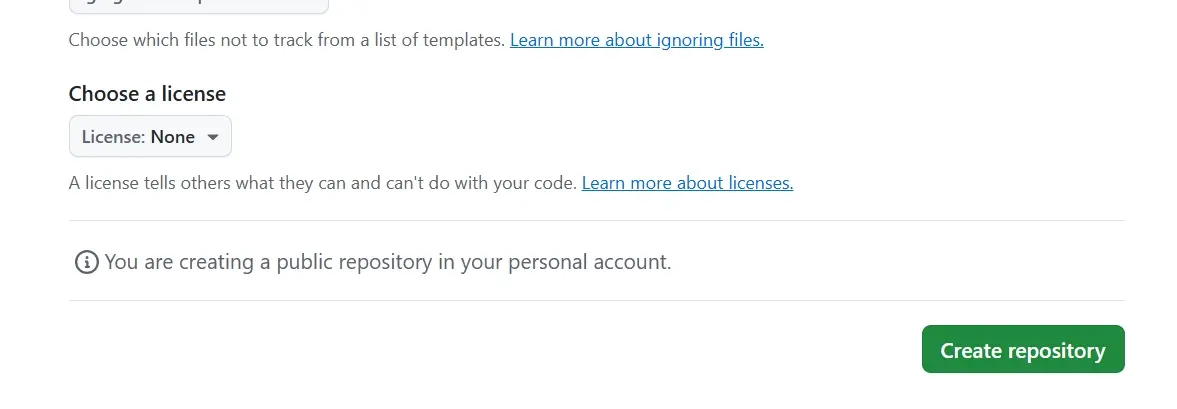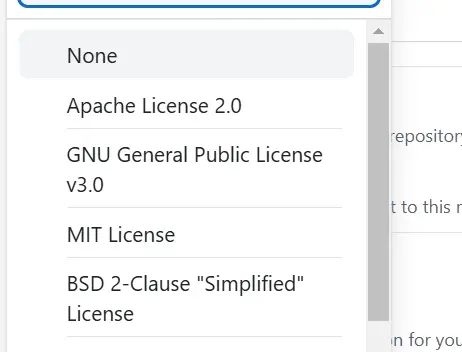One of the most common terms in tech is open-source. Raise your hand if you’ve ever searched for career advice, especially as a newbie, and come across statements like “Contributing to an open-source project increases your chances of getting hired”
Contributing to open source is beneficial to both beginners and experienced developers. It provides insight into working on large-scale projects while fostering innovation and collaboration.
What is open source, and the idea behind it?
What is Open-Source Development?
Jim Zemlin the executive director at the Linux foundation once said "Open source is about collaborating; not competing".
Open source is an approach to software development that is built on collaboration, which simply involves making software source code available for the public, allowing anyone to run, study, share, and modify it.
Let us examine the concept of software freedom as the catalyst behind the open-source movement.
Software Freedom
To define freedom, we describe it as the power or right to act, speak, or think as one wants. How does freedom relate to the use of software? Software is the basis of all functional systems. It runs digital infrastructures like servers and databases, it powers the hardware of our phones, computers, and machinery. It is safe to say that software powers technology.
Freedom in software use is exactly what it suggests; the use of software freely without restrictions.
Software was once commonly shared and not considered intellectual property. However, in 1974 the Commission on New Technology Uses of Copyrighted Work was established stating that code falls under the category of creative work, requiring copyright protection. This led to the growth of independent software publishing as an industry with proprietary source code becoming a key source of revenue.
A programmer named Richard Stallman was against software becoming proprietary, meaning that companies were restricting users from engaging with their code which he believed stifled innovation and user freedom so he formed the Free Software Movement.
Free Software Foundation
The Free Software Foundation is a non-profit organization founded by Richard Stallman on October 4, 1985, to support the free software movement - a social movement that aims to obtain and guarantee certain freedoms for software users.
The movement emerged from Stallman's experience at the MIT Artificial Intelligence Lab, where he and other hackers were refused access to the source code for a Xerox printer driver. Previously, he had modified the lab's older printer to electronically send messages when a printing job was completed or alert users if the printer was jammed.
This new restriction further fuelled Stallman's desire for free software. Stallman launched the GNU aiming to create a Unix-compatible free operating system. However, the project was incomplete because it lacked a kernel (software used to communicate between software and hardware). At the time, kernels were proprietary, owned by computer manufacturers, and unavailable across platforms.
In1991, Linus Torvalds, a Finnish software developer, independently created the Linux Kernel which he later licensed under the GNU GPL (General Public License). This kernel could be used with GNU components, leading to the development of other Linux-based operating systems such as Red Hat and Ubuntu.
The “Freedom of Software” mission ensures that users have the freedom to run a program for any purpose, study the program, modify it, and distribute it without restrictions. This is the opposite of proprietary, closed-source software.
To protect users’ freedom the FSF created the GNU GPL (General Public License) to ensure that any software using the license remains open-source. GPL-based projects are sustained through donations, support services, and various funding models.
Key Point
The Four Freedoms: A particular user has;
The freedom to run the program for any purpose
The freedom to study how the program works and modify it
The freedom to redistribute
The freedom to redistribute copies of modified versions.
Open source follows the concept of software freedom because it supports free access to source code, and most open-source licenses like GPL, and Apache support software freedom but with certain restrictions.
These licenses are legal agreements that outline the rights and restrictions for consumers or copyright owners (developers or companies with software rights).
Open-Source Licenses
There are over 100 open-source licenses that have different sets of rules for users. Different licensing models determine how software is used and distributed, and some of the most common models are GNU GPL (General Public License), MIT License, and Apache License.
Types of Open-Source Licenses
Permissive License
Let's say this is the “Do what you want with the code” however, the author retains ownership. You can build both open-source and proprietary software and make modifications, sell what you create and choose to make the source code available for people to use or keep it closed.
Types of Permissive licenses include;
MIT (Massachusetts Institute of Technology): MIT is a commonly used open-source software license that’s permissive (it has fewer restrictions) meaning that it grants users the freedom to do anything they wish with the associated documentation files.
Users can use, copy, modify, merge, publish, distribute, sublicense, and sell copies of the software as long as the license and copyright notice are included in all copies or substantial portions of the MIT-licensed software.
Apache License: Apache is a permissive open-source license that allows users to freely use, modify, distribute, and sublicense software for commercial licenses.
Copyleft
This is the opposite of copyright - this gives everyone control over their copy of the software running on their computer, however, you must also make your code open source so anyone can use it or build on it - this takes away your right from taking rights away from others.
In other words, you cannot take a copyleft code and make it proprietary once it is open source, it's always open source.
There’s a weak copyleft and a strong copyleft; the GNU Lesser General Public License, and Mozilla Public License fall under the weak copyleft while the GNU General Public License falls under the strong copyleft license. There is also the GNU Affero General Public License that falls under the very strong copyleft license.
Types of Copyleft licenses include;
GNU GPL (General Public License): GNU General Public License is intended to guarantee you the freedom to share and change all versions of a program making sure it remains free for all its users.
GNU General public license does not permit incorporating GPL-licensed code into propriety programs. If a software project is licensed under GPL, any consequent work must be released under GPL. This prevents proprietary software from integrating code licensed under GPL while keeping their source code closed.
Mozilla Public License - This is a free and open-source weak copyleft license for the Mozilla Foundation that can combine open-source code with proprietary code. However, the MPL-covered file which refers to the source code licensed under Mozilla Public License must remain open source, while other files with a different license remain closed.
GNU Affero General Public License (AGPL): This is a strong copyleft license designed for software that runs over a network and is accessed by users, particularly for web applications, APIs, and cloud-based services. AGPL ensures that when software is modified and used over a network, the source code is available to users.
Benefits of Open-Source Development
Some key benefits of open source include;
- Learning and Skill Development: Developers can improve their skills by working on open-source projects, and learn from forums or experienced contributors when they face challenges.
-Inclusivity: Open-source projects are open to anyone worldwide, allowing individuals to contribute regardless of location or background, as long they are interested in the project.
Community Building and Networking: Open source brings people together, creating a network of developers who share code, discuss challenges, and find solutions, leading to faster problem-solving.
Rapid Innovations and Growth: Open-source encourages innovation. Developers with diverse perspectives and creative mindsets work to create innovative solutions that drive the project forward.
Transparency and Security: Because of source code transparency, vulnerabilities can be detected and fixed, leading to reliable and secure software.
Better Software Quality: Developers offer ideas to optimize solutions that improve and elevate the software quality of the project.
How to get Started with Open-Source Development - (Creator Perspective)
If you want to start and maintain an open-source project, consider the following;
Define the Purpose of Your Project
When you make your project Open-source it means you want others to view, provide feedback, and contribute to your work. After determining the purpose, you must include an open-source license, README, contributing guidelines, and a code of conduct. These documents help contributors understand the purpose of the project while protecting your rights and those of your contributors.
Choose a License
Including a license like MIT or Apache2.0 is essential when you launch your open-source project to avoid legal issues. When creating a repository, you’ll find the option to choose a license - make sure you choose one that aligns with your project goals after properly understanding what it entails.

This is what the options for licenses look like;

Provide Clear Documentation
Well-written documentation helps contributors set up a project quickly. It's essential to explain how to install and run the project, include guidelines, and label the issues with tags like "beginner-friendly" or "help wanted" for new contributors.
Actively Engage and Review Contributions
Regularly reviewing pull requests and issues, and providing feedback to contributors is necessary to maintain an open-source project. Also, acknowledging contributions in release notes or project updates shows appreciation for their contributions.
For further engagement, you can create a community space using platforms such as Discord or Slack to encourage and foster engagement amongst contributors.
How to Contribute to an Open-Source Project (Contributors Perspective)
There are multiple open-source projects that you can contribute to depending on the sector. Here’s a simple guide to get you started.
Research
Do your research based on the type of project you are interested in. You can check the internet by querying keywords related to the field for instance, “open source project for software developers”
Read and follow contribution guidelines
Before you start contributing, it's important to read the project guidelines and review the "CONTRIBUTING.md" file in the project repository. This will help you to understand the project's requirements, coding conventions, and submission process.
Understand the Project Scope
Understanding the project's scope and purpose by reading the documentation and exploring the codebase would help you learn how things work.
Replicate and Investigate Issues
Before fixing issues, you should replicate the problem in your local environment, and investigate it. You will fork the project from a repository like GitHub and set it up in your local development environment before you start contributing.
Replicating the issue will help you understand the problem, which, in turn, will help you find a solution.
Create a New Branch for Your Code Changes
It is important to create a new branch for changes. Doing this keeps your work separate from the main branch, making it easier to review.
Test Your Changes
Before submitting a pull request (Pull Request), make sure that you test the changes made. This helps maintain the quality of the project.
Write a Clear Commit Message
Commit messages are essential for helping reviewers understand the changes made to the project. Writing a clear message that describes your fixes is necessary for effective collaboration.
Maintain Proper Communication
When working on a community project, you will likely receive feedback from reviewers or other contributors. It is important to be open to constructive criticism. Likewise, if you have questions or feedback, communicate professionally and respectfully. Also, do not be afraid to ask for help when needed.
Stay Actively Engaged
Being responsive and actively engaging is important. Addressing concerns or feedback would help you learn. Sometimes you may not receive feedback as quickly as you would like, in such cases, be patient and follow up without being excessive.
Keep on Contributing
Once your PR is accepted, continue contributing to the project to gain more experience.
Summary
Open source involves sharing code freely, but it goes beyond that. It is a collaborative effort between creators and collaborations that fosters growth and drives innovation.
Some see it as a win-win for collaborators and creators, while others argue that creators benefit more than collaborators.
However, both parties gain in different ways: Collaborators refine their technical skills, while project owners scale faster by leveraging diverse, innovative minds to build better software.
Many companies not only build on open-source technologies, but also actively contribute to them, upholding the core values of open collaboration and progress.
Frequently Asked Questions
How is Open Source VPS Hosting different from proprietary hosting solutions?
Unlike proprietary solutions, Open Source VPS Hosting allows you to leverage free and customizable software without being locked into specific vendor tools, giving you greater flexibility and cost savings.
What are the best practices for managing an Open Source VPS?
Regularly update your software to the latest versions, monitor server performance and security, utilize configuration management tools for maintaining server settings, and engage with the open source community to stay informed about the best practices and new developments.
How does Open Source VPS Hosting benefit developers?
Open Source VPS Hosting gives developers complete control over server settings and configurations, enabling them to build, test, and deploy applications with full customization.
What types of projects are ideal for Open Source VPS Hosting?
This hosting solution is perfect for resource-intensive projects like application development, e-commerce websites, or custom software that require flexibility and scalability.

Jessica Agorye is a developer based in Lagos, Nigeria. A witty creative with a love for life, she is dedicated to sharing insights and inspiring others through her writing. With over 5 years of writing experience, she believes that content is king.
View all posts by Jessica Agorye




















